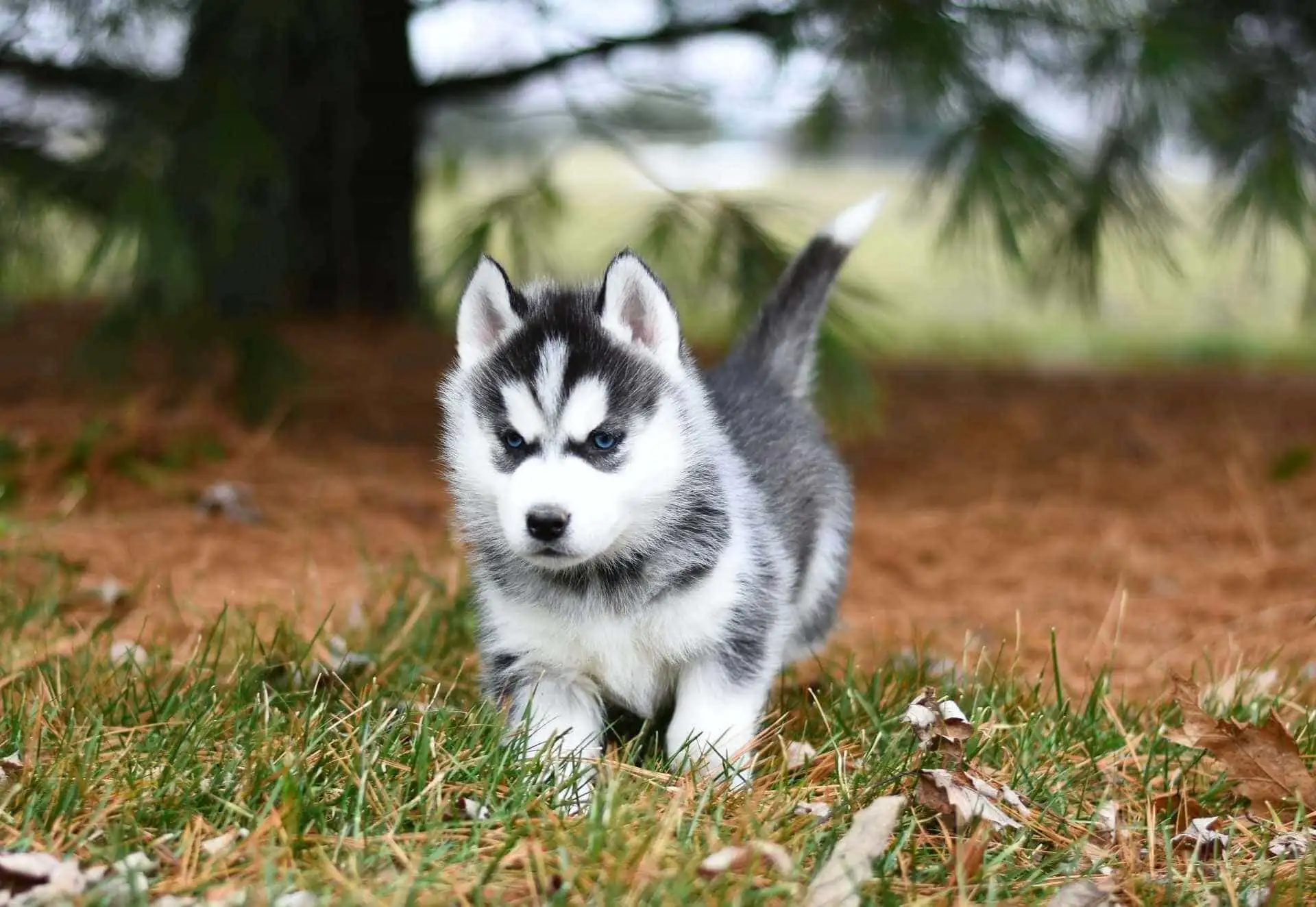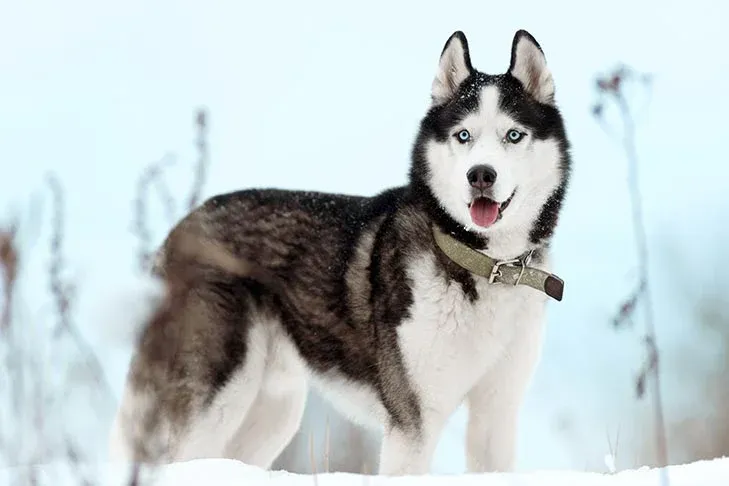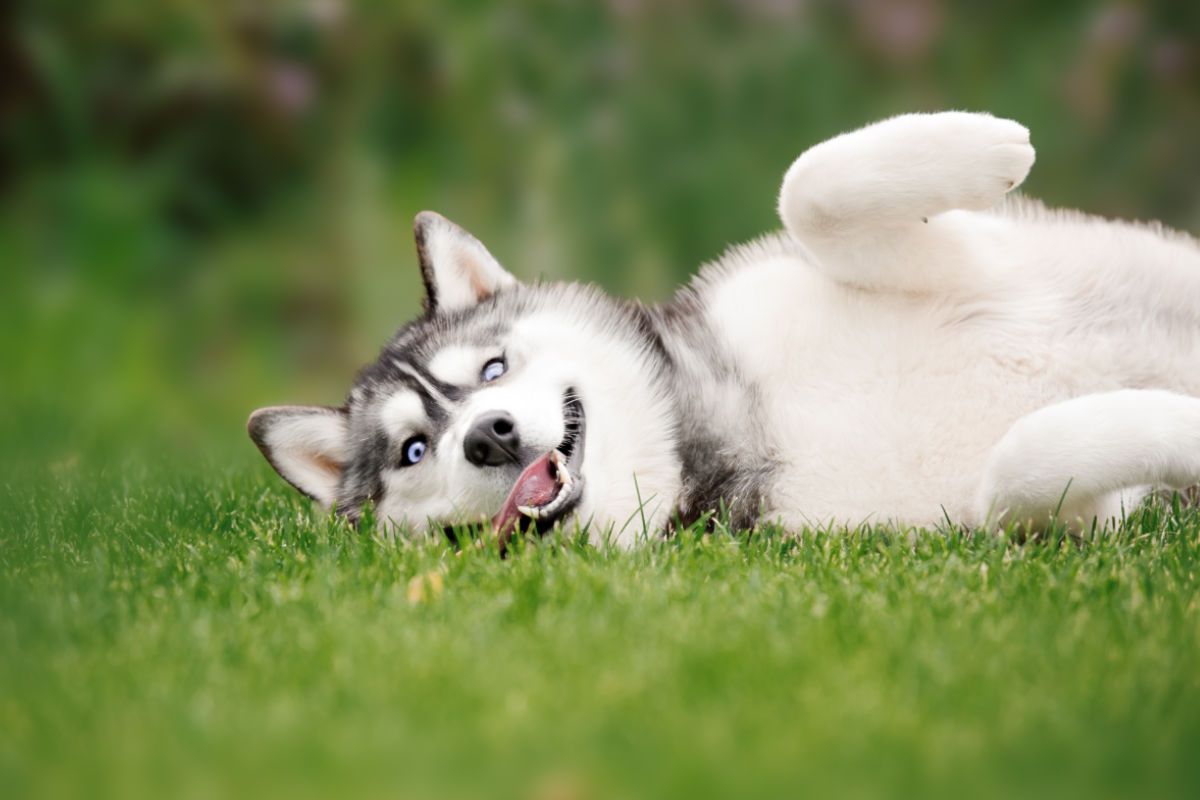Huskies are a breed of dogs known for their striking appearance and unique behaviors. They are known for their vocal nature and are often referred to as "talkative" dogs. Understanding why Huskies talk requires an understanding of their characteristics and the importance of communication for this breed.
Huskies have different types of vocalizations, including howling, barking, whining, and even talking or singing. These vocalizations serve various purposes for Huskies, such as social interaction, expressing emotions, alerting and warning, and seeking attention.

Why Do Huskies Talk?
Huskies have a unique way of communicating, and in this section, we will explore why they talk. From the importance of communication for these intelligent creatures to the genetic and evolutionary factors that contribute to their vocalizations, we'll uncover the fascinating reasons behind their expressive nature. So, join us on this journey to understand the intriguing world of husky communication. Get ready to dive into their howls, barks, and vocalizations, and unlock the secrets behind why huskies talk.
Unlock Savings on Your Husky's Safety with Fi!
Before diving into the fascinating vocal world of huskies, here’s a special deal for husky owners. Use the code HUSKY20 to get $20 off on the Fi Dog Collar. This high-tech collar not only keeps a tab on your husky's location through the Fi app but also includes a geofence feature to alert you if your adventurous friend strays too far. Ensure your husky's safety while they explore the world, by visiting TryFi.com today to take advantage of this exclusive offer!

The Importance of Communication for Huskies
Communication is crucial for Huskies as it holds immense importance in their lives. These furry companions naturally possess a strong inclination to express themselves in various ways. Through vocalizations and other forms of communication, Huskies convey their needs, desires, and emotions. For Husky owners, understanding the significance of communication is vital to maintaining a strong bond with their beloved pets.
Social interaction and bonding are fostered through communication for Huskies. They utilize vocalizations as a means to establish and maintain relationships with humans and other dogs. Through their vocal expressions, whether it be expressing excitement, happiness, or anxiety, Huskies enable their owners to comprehend their emotional states and respond accordingly.
Another important aspect of communication for Huskies is alerting and warning. Their keen sense of the surroundings prompts them to use vocalization to notify their owners of potential dangers or intruders. By paying attention to these communication cues, owners can effectively ensure the safety and well-being of their Huskies.
Furthermore, communication serves as a way for Huskies to seek attention. They relish being the center of their owner's focus and will vocally express their desire for interaction. Responding to their communication by engaging in play or providing affection fosters a robust and positive relationship with these intelligent and communicative dogs.
Genetic and Evolutionary Factors
Genetic and evolutionary factors have played a significant role in shaping the communication abilities of Huskies. It is believed that the genetic makeup of Huskies, inherited from their ancestors like wolves, contributes to their vocal nature. These genes related to vocalizations are passed down through generations, giving Huskies the unique ability to communicate through various sounds like howling, barking, whining, and even "talking" or singing.
Furthermore, throughout their evolution, Huskies have relied on vocal communication as a means to survive and thrive in their environments. Howling, in particular, has served as a way for Huskies to communicate over long distances, helping them maintain social bonds and coordinate movements during activities like sledding. These evolutionary factors have preserved this behavior in Huskies due to its effectiveness in signaling important information and fostering social connections.

Types of Vocalizations in Huskies
Have you ever wondered why Huskies are so vocal? In this section, we'll delve into the intriguing world of vocalizations in Huskies. From their famous howling to their unique way of talking or singing, we'll explore the different types of vocal expressions that these magnificent creatures possess.
Howling
is a common vocalization in Huskies and serves various purposes.
1. Expression of Communication: Huskies howl to communicate with other dogs or even humans. It is their way of expressing their presence and conveying messages to their pack members.
2. Instinctual Behavior: Howling is deeply ingrained in a Husky's genetic makeup, as they are descended from sled dogs which used howling as a means of communication over long distances. It is a natural instinct for them to howl in certain situations.
3. Social Bonding: Howling can also be a way for Huskies to strengthen social bonds within their pack. By howling together, they affirm their connection and reinforce their group dynamics.
4. Expression of Emotions: Huskies may howl when they are feeling excited, anxious, or lonely. It can be a way for them to release pent-up energy or seek comfort and attention from their owners.
Barking
is one of the types of vocalizations exhibited by Huskies. Here are some key points to consider about Huskies and their barking behavior:
|
It is important for Husky owners to understand the meanings behind their barking and respond accordingly. Paying attention to the context, body language, and tone of their barks can provide insights into what the Husky is trying to communicate. Training and positive reinforcement can help cultivate desired barking behaviors in Huskies, ensuring effective and appropriate communication between the dog and its owner.
Whining
Whining is a common form of vocalization in Huskies. It is important to understand why Huskies whine and how to interpret their whining to respond appropriately.
Whining is a way for Huskies to express emotions. They may whine when they are anxious, excited, or seeking attention. It is essential to recognize the context and body language accompanying the whining to understand their specific need or desire.
Whining can also serve as a form of communication for Huskies to alert and warn their owners. If they sense danger or feel uncomfortable in a certain situation, they may whine to signal their concerns. Paying attention to the surrounding environment can help determine the reason behind their whining.
Huskies may whine as a means of social interaction and bonding. They may use whining to initiate play or engage in communication with other dogs or even their human companions. Understanding their desired interaction can facilitate effective communication and strengthen the bond between the Husky and its owner.
Talking/Singing
When it comes to Huskies, their vocalizations go beyond just barking and howling. Here are some types of vocalizations that Huskies engage in:
Huskies have a unique ability to produce sounds that resemble human speech. They can mimic words and phrases and express themselves through "talking" or "singing" in a melodic manner.
Reasons Why Huskies Talk
Huskies are well-known for their talkative nature, but have you ever wondered why? In this section, we'll uncover the reasons behind their unique communication style. From social interaction and bonding to expressing emotions, alerting and warning, and seeking attention, each sub-section will shed light on the diverse motivations that drive Huskies to talk. Prepare to delve into the fascinating world of Husky vocalizations and gain a deeper understanding of why these majestic creatures have so much to say.
Social Interaction and Bonding
Social interaction and bonding are crucial aspects of husky communication that strengthen their relationships with their owners and fellow huskies. Here are some important points to consider:
|
Expressing Emotions
Huskies are known for their expressive nature and one of the main ways they express their emotions is through vocalizations. Expressing emotions through vocalizations is crucial for huskies as it allows them to communicate with their human companions and fellow dogs. Whether they are happy or sad, huskies use their vocalizations to convey their feelings and needs. When they are happy, they may let out cheerful yips and barks, showing their excitement and contentment. Conversely, when they are sad or upset, they may whine or howl, expressing their emotions of loneliness or distress.

Understanding husky communication involves not only listening to their vocalizations but also paying attention to their body language. By observing these cues, husky owners can gain valuable insights into their emotions and effectively communicate and interact with them. By responding to their vocal cues accordingly, husky owners can enhance the human-dog bond and gain a better understanding of their emotional well-being.
One interesting fact about huskies is that their ability to express emotions through vocalizations dates back thousands of years. As sled dogs in the Arctic regions, huskies relied on their vocalizations to communicate with their mushers, alerting them to potential dangers. This deep-rooted genetic and evolutionary trait has remained intact over time, making huskies one of the most expressive and vocal dog breeds. Today, their ability to express emotions through vocalizations continues to fascinate and charm dog lovers worldwide.
Alerting and Warning
When it comes to alerting and warning, Huskies have distinct ways of communicating their messages to their owners. Here are some ways in which Huskies alert and warn their owners:
- Barking: Huskies may bark to alert their owners of potential dangers or intruders. This is their way of signaling that something is not right or out of the ordinary.
- Howling: One of the most recognizable forms of Husky communication, howling is often used to warn others of potential threats or to gather the attention of their owners. It can also serve as a way for Huskies to express their emotions.
- Body Language: Huskies may use their body language to alert their owners, such as standing tall and stiff with their ears perked up or their tail held high. This can indicate that they are on high alert and ready to respond to a potential danger.
Seeking Attention
Huskies are known for their vocal nature, and one of the reasons they seek attention is to communicate their needs. When a Husky wants attention, they may make various vocalizations or use body language cues. It is crucial to pay attention to these signals in order to fulfill their desire for interaction.
Huskies seek attention when they feel lonely or bored. They are social animals and thrive on human companionship. By seeking attention, they are trying to engage with their owners and form a bond. It is essential to respond to their calls, as neglecting their need for attention can lead to behavioral issues.
To effectively address a Husky's need for attention, owners should engage in playtime or activities that stimulate their minds. Spending quality time with them, providing mental and physical exercise, and offering rewards for good behavior can help fulfill their attention-seeking tendencies. Positive reinforcement and consistent training can also boost their well-being and reduce excessive vocalization due to attention-seeking behavior.
Understanding and responding to a Husky's communication cues, including their vocalizations, body language, tone, and pitch, is crucial in meeting their need for attention. By being attentive and responsive, owners can cultivate a strong bond with their Huskies and ensure their emotional well-being.
Understanding and Responding to Husky Communication
When it comes to understanding and responding to husky communication, it's important to pay attention to various cues. From deciphering their body language to interpreting tones and pitches, each aspect holds valuable insights into what our furry friends are conveying. The right training and reinforcement techniques can bridge the communication gap and foster a stronger bond with our huskies. So, let's dive into these sub-sections and unlock the secrets of husky language!
Body Language
Understanding husky body language is vital for dog owners to effectively communicate with their pets. Husky body language encompasses several key elements:
- Ears: When a husky's ears are erect and facing forward, it signifies alertness and interest. If the ears are pulled back or flattened against the head, it may indicate fear or submission.
- Tail: A wagging tail generally indicates happiness and excitement. A tucked tail between the legs suggests fear or anxiety. A raised tail held high can indicate confidence or dominance.
- Posture: A relaxed and loose posture with the head held high indicates a calm and confident husky. Conversely, a stiff posture with a lowered head and body may indicate aggression or fear.
- Eye contact: Direct eye contact from a husky often signals dominance or challenge. Averting their gaze or blinking frequently can indicate submission or appeasement.
- Facial expressions: Huskies have expressive faces. Raised eyebrows, wide eyes, and a slightly opened mouth can indicate curiosity or excitement. Snarling or baring teeth is a clear sign of aggression.
- Body movements: A husky's body movements convey various meanings. A playful husky may jump, bounce, or engage in zoomies. Stiff and rigid movements can indicate tension or discomfort.
Observing these aspects of body language along with vocal and behavioral cues is crucial to accurately interpret what your husky is trying to communicate. By understanding their body language, you can better respond to their needs and strengthen the bond with your husky.

Tone and Pitch
When it comes to understanding and responding to husky communication, the tone and pitch of their vocalizations play a crucial role. Huskies have a wide range of vocal expressions, each accompanied by a unique tone and pitch, conveying different meanings.
| Tone | Pitch |
| Low | Deep and resonant |
| Neutral | Moderate and steady |
| High | Sharp and piercing |
A low tone with a deep and resonant pitch may indicate a warning or a serious message, while a neutral tone with a moderate and steady pitch is often associated with communication in a calm or relaxed state. On the other hand, a high tone with a sharp and piercing pitch could express excitement, urgency, or attention-seeking behavior.
To effectively understand and respond to husky communication in terms of tone and pitch, it is essential to pay attention to the context, body language, and other vocal cues. Consistent training and reinforcement can help cultivate appropriate responses to different tones and pitches, ensuring effective communication between huskies and their human companions.
To better navigate the complexities of husky communication, it is recommended to observe and familiarize yourself with your husky's unique vocal patterns and the corresponding tone and pitch variations they exhibit. This understanding will enable you to strengthen the bond and build a more harmonious relationship with your husky.
Some Facts About Why Huskies Talk:
✅ Huskies talk to communicate with their owners and convey specific messages like the need to go potty or mealtime.
✅ Huskies also vocalize in response to external sounds and noises, such as sirens, baby cries, and the TV.
✅ Talking is a part of huskies' ancestral behavior as pack dogs, developed for survival in the wild.
✅ Huskies' ability to talk is a unique characteristic resulting from their history as working dogs.
✅ Huskies may vocalize as a form of self-expression or to communicate with other dogs.
Frequently Asked Questions
- Why do Huskies talk?
- Huskies are known for their talkative nature, using vocalizations like howling, whining, crying, and even screaming to communicate. This behavior is ingrained in them due to their history of living and working in the wild for thousands of years.
- Do Huskies imitate sounds to communicate?
- While huskies cannot technically talk like humans, they are able to imitate sounds and recognize tonal patterns to convey their emotions and needs. This allows them to communicate with their owners and convey specific messages such as the need to go potty or that it's mealtime.
- Why do Huskies talk in response to external sounds?
- Huskies also talk in response to external sounds and noises, such as sirens, baby cries, and the TV. This behavior could be an attempt to communicate with lost pack mates or pacify a crying baby.
- What is the role of communication in huskies' ancestral behavior as pack dogs?
- Communication was crucial for survival in the wild, so vocalizations like howling, whining, crying, and talking were developed. These pack instincts and vocalizations are still deeply rooted in huskies, despite domestication.
- How can pet owners understand and interpret their huskies' talking?
- It is important for husky owners to understand and interpret their dogs' talking in order to meet their needs and provide appropriate responses. Training methods like "Brain Training For Dogs" can be beneficial for huskies, improving obedience, behavior, and stubbornness.
- Why do huskies have a unique ability to talk compared to other breeds?
- Huskies' ability to talk is a unique characteristic that sets them apart from other breeds. This is a result of their history, instincts, and the influence of their breeding as working dogs.




